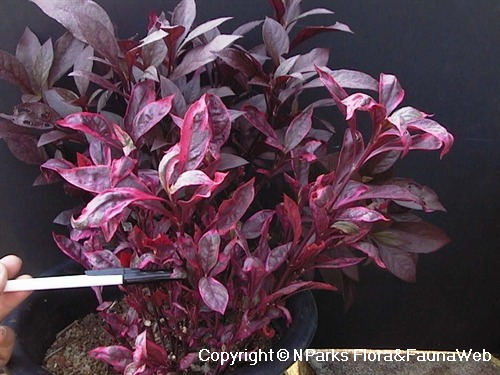
Back
Alternanthera brasiliana 'Brazilian Red Hots'
| Family Name: | Amaranthaceae |
| Synonyms: | Alternanthera dentata 'Brazilian Red Hots', Alternanthera brasiliana 'Brazilian Red', Alternanthera 'Brazilian Red Hots', Gomphrena brasiliana 'Brazilian Red Hots' |
| Common Name: | Brazilian Joyweed, Purple Joyweed |
Name
Classifications and Characteristics
| Plant Division | Angiosperms (Flowering Seed Plants) (Dicotyledon) |
|---|---|
| Plant Growth Form | Herbaceous Plant |
| Lifespan (in Singapore) | Perennial |
| Mode of Nutrition | Autotrophic |
| Plant Shape | Shrubby |
| Maximum Height | 0.5 m to 0.9 m |
| Maximum Plant Spread / Crown Width | 0.5 m to 0.6 m |
Biogeography
| Native Distribution | Of horticultural origin |
|---|
Description and Ethnobotany
| Growth Form | Perennial herb up to 0.9 m tall. |
|---|---|
| Foliage | Elliptic leaves are purplish-red near the centre and vibrant pink/ fuschia along the leaf margin. |
| Flowers | Small, white, pompom-shaped flowers are produced in the leaf axils (near the point of leaf attachment to the stem). |
| Similar | In the nursery trade, this cultivar is sometimes erroneously referred to as Pseuderanthemum 'Jessica'. |
| Cultivation | Fairly easy plant to grow. Prefers loamy rich, well-drained soils. Quite drought-tolerant when established, may wilt during extreme drought stress but recovers well when supplied with water. Tip-prune to encourage bushy and compact form. |
| Etymology | Genus epithet 'Alternanthera' is a combination of 'alternans' (Latin for alternating) and 'anthera' (Greek for anthers), alluding to how alternate anthers of plants from this genus are sterile. Species epithet 'brasiliana' refers to the Brazilian origin of the species form. Cultivar name was registered in 2007, as a patented hybrid of Alternanthera brasiliana. |
Landscaping Features
| Desirable Plant Features | Ornamental Foliage |
|---|---|
| Landscape Uses | General, Flowerbed / Border, Container Planting |
| Thematic Landscaping | Naturalistic Garden |
Plant Care and Propagation
| Light Preference | Semi-Shade, Full Sun |
|---|---|
| Water Preference | Moderate Water |
| Plant Growth Rate | Moderate |
| Rootzone Tolerance | Fertile Loamy Soils, Well-Drained Soils, Moist Soils |
| Maintenance Requirements | Moderate |
| Propagation Method | Stem Cutting |
| Propagation Method Remarks | Stem cuttings root easily. |
Foliar
| Foliage Retention | Evergreen |
|---|---|
| Mature Foliage Colour(s) | Purple, Pink |
| Mature Foliage Texture(s) | Crinkled / Twisted |
| Foliar Type | Simple / Unifoliate |
| Foliar Arrangement Along Stem | Opposite |
| Foliar Shape(s) | Non-Palm Foliage (Elliptical) |
| Foliar Venation | Pinnate / Net |
| Foliar Margin | Entire - Wavy / Undulate |
| Foliar Apex - Tip | Acuminate |
| Foliar Base | Cuneate |
| Typical Foliar Area | Mesophyll ( 45cm2 - 182.25 cm2 ) |
| Leaf Area Index (LAI) for Green Plot Ratio | 4.5 (Shrub & Groundcover - Dicot) |
Non - Foliar and Storage
| Stem Type & Modification | Herbaceous |
|---|---|
| Root Type | Underground (Fibrous Root) |
Floral (Angiosperm)
| Flower & Plant Sexuality | Bisexual Flowers |
| Flower Colour(s) | White |
|---|---|
| Flower Texture(s) | Papery |
| Flower Grouping | Cluster / Inflorescence |
| Flower Location | Axillary |
| Flower Symmetry | Bilateral |
| Inflorescence Type | Head / Capitulum |
| Flowering Period | Rarely |
| Flowering Habit | Polycarpic |
| Flowering Period Remarks | This plant seldom flowers in Singapore, but it blooms year-round in other countries. It has been observed to bloom in Singapore when regularly fed with a high phosphorous fertilizer. |
Image Repository
Others
| Master ID | 1075 |
|---|---|
| Species ID | 2368 |
| Flora Disclaimer | The information in this website has been compiled from reliable sources, such as reference works on medicinal plants. It is not a substitute for medical advice or treatment and NParks does not purport to provide any medical advice. Readers should always consult his/her physician before using or consuming a plant for medicinal purposes. |


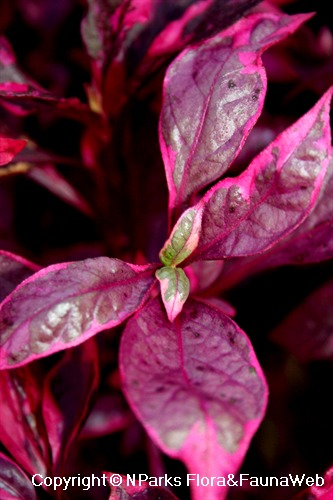
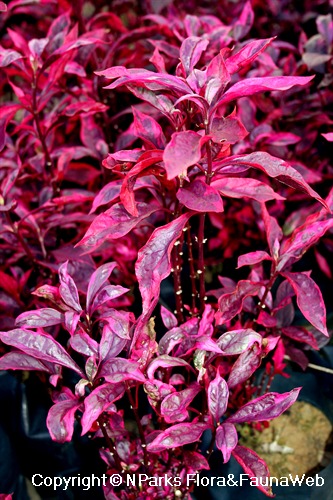

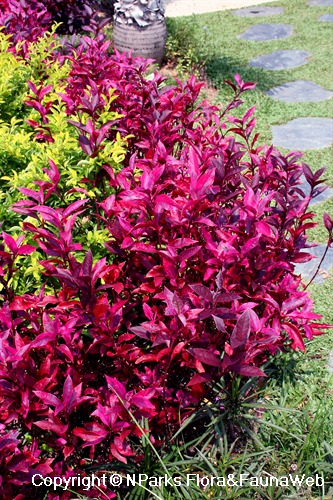
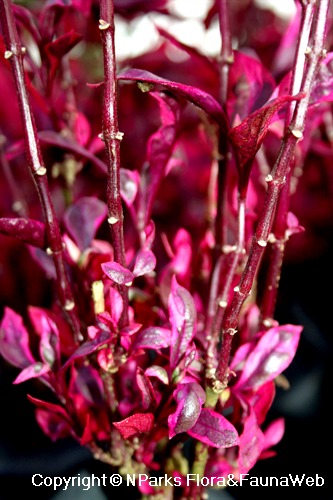


.jpg)

.jpg)